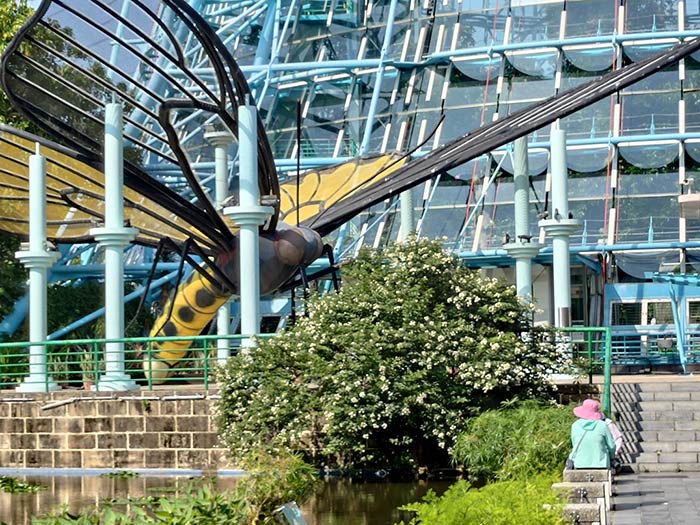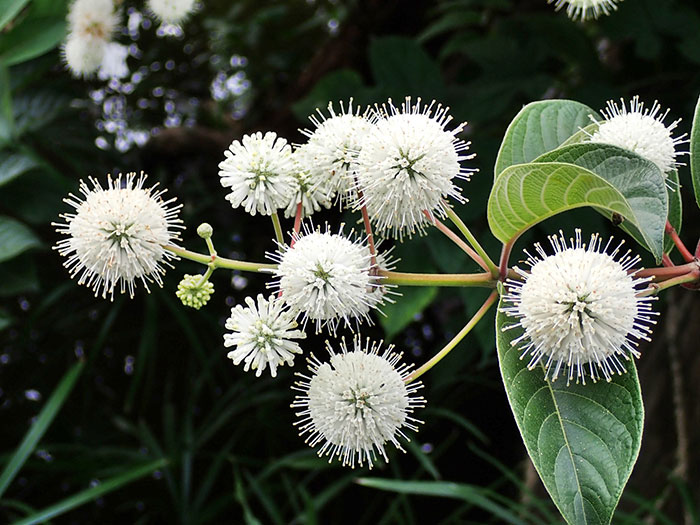Cephalanthus tetrandrus
The buttonbush is distributed across South Asia, Mainland Southeast Asia, China, and Taiwan. In Taiwan, it is found in warm regions from coastal to inland waters at elevations of 10–500 meters, such as ditches, ponds, stream banks, and paddy fields. It was widely cultivated in the Yilan region in the past for protecting embankments and preventing landslides and erosion. However, the cementation of hydraulic infrastructures has resulted in severe habitat degradation and environmental changes, ultimately causing the extirpation of buttonbush from its natural range. Conservation initiatives, including ex situ propagation and reintroduction programs, have achieved notable success. The species has been reestablished in designated protected areas, exhibiting signs of ecological recovery, and is now also incorporated into riparian landscaping practices to support habitat restoration. The museum has planted it in the Northern Lowland Area and beside the central pond of the Botanical Garden. There are also several trees beside the moat facing Guanqian Road and they bloom steadily every year from May to July.
The flowers in the spherical inflorescence of the buttonbush in the museum usually bloom gradually in May each year. During the flowering season, they attract a large number of insects, including many species of butterflies. May and June each year mark a gap when spring-flowering plants have stopped blooming and autumn-flowering plants have not yet produced pollen and nectar. The flowering season of the buttonbush fills this gap, providing an important source of nectar for surrounding organisms.
In early Taiwanese agricultural society, buttonbush wood was used to make blower for ironworking, which is how the buttonbush got its Chinese name.

